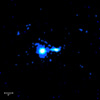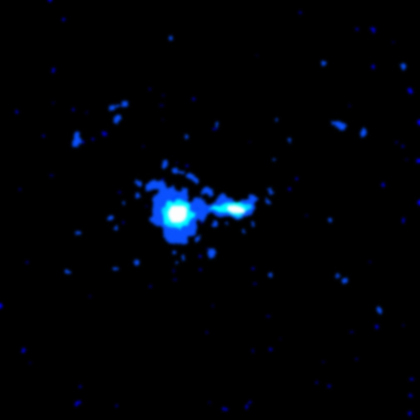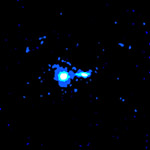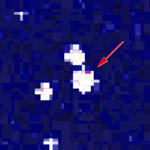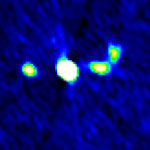NASA Unveils First Images From Chandra X-Ray Observatory
PKS 0637-752 is so distant that we see it as it was 6 billion years ago. It is a luminous quasar that radiates with the power of 10 trillion suns from a region smaller than our solar system. The source of this prodigious energy is believed to be a supermassive black hole.
| Multi-wavelength Images: (all images to same scale) | ||
|---|---|---|
|
||||||||||||||||||||||||
An astronomical image of a quasar, PKS 0637-72, is shown on the screen. The image is dominated by blue colors floating on black, with a bright blue-white light in the center. The structure of the quasar appears to be shaped like an irregular circle with a protrusion to the right side, all surrounded by a handful of smaller blue dots. PKS 0637-72 is so distant that we see it as it was 6 billion years ago. It is a luminous quasar that radiates with the power of 10 trillion suns from a region smaller than our solar system. The source of this prodigious energy is believed to be a supermassive black hole. Chandra's X-ray image reveals a powerful X-ray jet extending (on the right) more than 200,000 light years into intergalactic space that is probably due to a beam of extremely high-energy particles.



